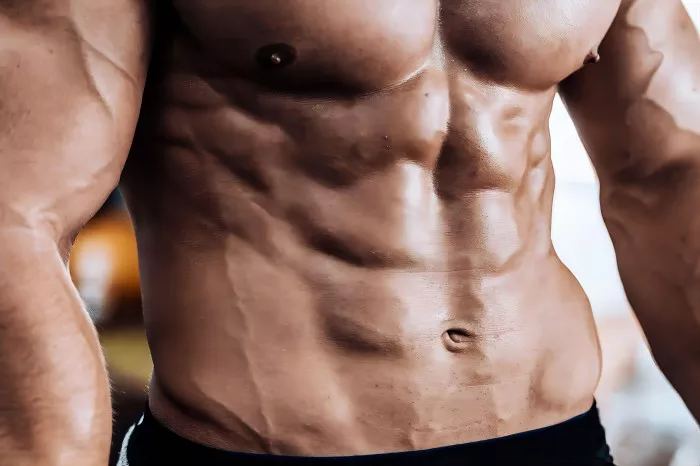The Mystery of Six-Pack Abs
Achieving six-pack abs is a fitness goal coveted by many, yet attained by few. The elusive nature of this physical attribute often leads individuals to wonder why some people seem naturally predisposed to flaunting a chiseled midsection while others struggle despite rigorous exercise and dietary efforts. Unraveling the mystery behind why some individuals possess six-pack abs while others do not requires delving into a combination of genetics, exercise habits, and dietary factors.
Genetic Predisposition
Genetics play a significant role in determining an individual’s body composition, including the distribution of fat and muscle mass. Some people are genetically predisposed to store fat in specific areas of the body, while others may have a naturally leaner physique with less adipose tissue covering their abdominal muscles. This genetic variability can influence whether someone is more likely to develop visible six-pack abs or if they will struggle to achieve this aesthetic.
Additionally, genetics influence muscle development and definition. Some individuals may have inherently thicker or more prominent abdominal muscles, making it easier for them to achieve a defined six-pack appearance. Conversely, others may have thinner abdominal muscles or a different muscle fiber composition, which can affect the visibility of their abs even with consistent training.
Exercise Habits
While genetics play a significant role, exercise habits also play a crucial role in the development of six-pack abs. Specific abdominal exercises, such as crunches, planks, and leg raises, target the muscles of the core, including the rectus abdominis, obliques, and transverse abdominis. Consistently incorporating these exercises into a well-rounded fitness routine can help strengthen and tone the abdominal muscles, increasing the likelihood of achieving a six-pack appearance.
However, it’s essential to note that spot reduction, the idea that you can target fat loss in a specific area of the body through exercise alone, is a myth. While abdominal exercises can help strengthen the muscles beneath the fat, they will not necessarily reduce fat specifically in the abdominal region. To reveal the underlying abdominal muscles and achieve a six-pack, individuals must focus on overall fat loss through a combination of cardiovascular exercise, strength training, and a balanced diet.
Dietary Factors:
Diet plays a crucial role in achieving visible six-pack abs. Even with well-developed abdominal muscles, excess body fat can obscure definition and prevent the appearance of a six-pack. To reduce body fat and reveal abdominal definition, individuals must adhere to a calorie-controlled diet that emphasizes whole, nutrient-dense foods while minimizing processed foods, added sugars, and excessive caloric intake.
A diet rich in lean protein, fruits, vegetables, whole grains, and healthy fats can support muscle growth and fat loss, helping individuals achieve a leaner physique. Additionally, staying hydrated and limiting alcohol consumption can contribute to overall fat loss and abdominal definition.
Combining Factors for Success:
Achieving six-pack abs requires a multifaceted approach that combines genetic predisposition, exercise habits, and dietary factors. While genetics may influence an individual’s baseline body composition and muscle definition, exercise and diet play essential roles in maximizing abdominal development and reducing body fat.
Consistency and dedication are key when pursuing six-pack abs. Consistently following a well-rounded exercise routine that includes abdominal exercises, strength training, and cardiovascular exercise, coupled with a balanced diet that supports fat loss and muscle growth, can help individuals achieve their fitness goals.
It’s essential to remember that everyone’s body is unique, and individual results may vary. While some individuals may naturally possess visible six-pack abs with minimal effort, others may need to work harder and be more disciplined with their exercise and dietary habits. Additionally, factors such as age, gender, metabolism, and lifestyle choices can all influence the ability to achieve six-pack abs.
Conclusion:
The quest for six-pack abs is a multifaceted journey influenced by genetics, exercise habits, and dietary factors. While genetics may play a significant role in determining an individual’s baseline body composition and muscle definition, exercise and diet are critical factors in maximizing abdominal development and reducing body fat.
Consistency, dedication, and patience are essential when pursuing six-pack abs. By following a well-rounded exercise routine, including abdominal exercises and cardiovascular training, and adhering to a balanced diet that supports fat loss and muscle growth, individuals can increase their chances of achieving their fitness goals. However, it’s essential to recognize that everyone’s body is unique, and individual results may vary based on a variety of factors.
Related Topics:
Does Hot Water Help Lose Belly Fat?


